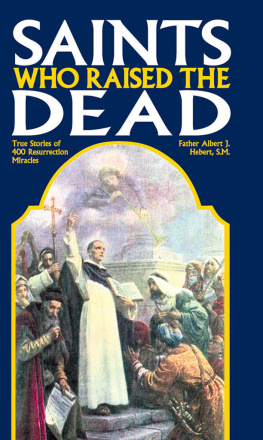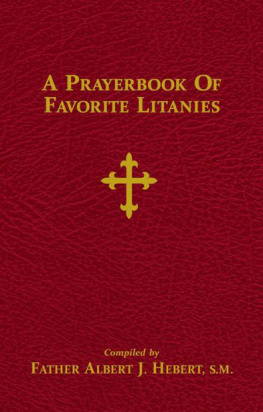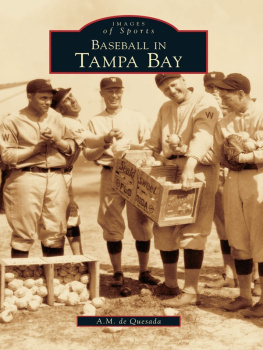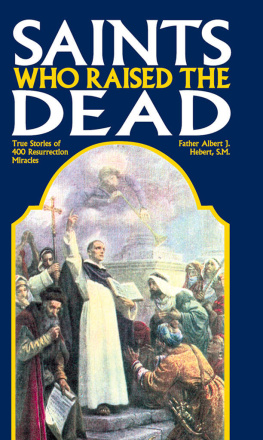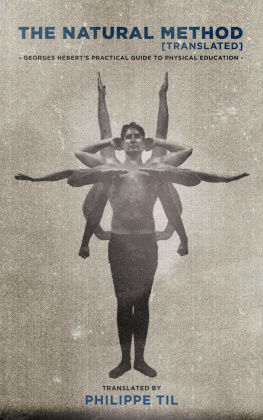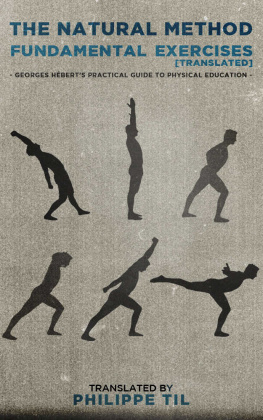Published by The History Press
Charleston, SC
www.historypress.com
Copyright 2019 by Lou Hebert
All rights reserved
First published 2019
e-book edition 2019
ISBN 978.1.43966.611.1
Library of Congress Control Number: 2018960970
print edition ISBN 978.1.46714.029.4
Notice: The information in this book is true and complete to the best of our knowledge. It is offered without guarantee on the part of the author or The History Press. The author and The History Press disclaim all liability in connection with the use of this book.
All rights reserved. No part of this book may be reproduced or transmitted in any form whatsoever without prior written permission from the publisher except in the case of brief quotations embodied in critical articles and reviews.
PREFACE
The narrative of Toledos rise from the depths of the Black Swamp to that of a key industrial city of the Midwest has been told many times before over many decades. This is not new. Consequently, the tapestry of that history is often a well-worn pattern of the same characters and story lines that is familiar to most. In Hidden History of Toledo, my attempt was to search out those narratives that were perhaps not as well knownthe colorful or interesting stories and people that have gone largely unreported, tucked away and lost in the shadowy corners of memory and time. Finding those pearls and revealing them is a great joy, and so its been a labor of great passion to spend countless hours researching and reading countless old newspapers where many of the forgotten old tales still live. Thankfully, there are many others who share my love for the past, and they have offered abundant help for this effort in many forms, from personal experiences to professional encouragement. These include Nan Card, Clark Curtis, Ken and Bonnie Dickson, Shirley Green, John Jaeger, Judy Justus, Peter Mintun, Leo Schnapp, Mike Tailford, Doug Tracy and all those nameless newspaper scribes of years past who chronicled the players and events that remain forever frozen in ink.
Special thanks to the Toledo Blade photo department; the Toledo Police Museum; the Ward Canaday Center for Special Collections at the University of Toledo; the U.S. Postal Service Museum at the Smithsonian Institution; the Ottawa County Historical Society, Port Clinton, Ohio; the ToledoLucas County Public Librarys local history section; the Perrysburg Public Library; the Wood County Public Library; the Ohio State Historical Society; the Rutherford B. Hayes Presidential Library; the U.S. Consul office in Quebec, Canada; the Harness Racing Museum, Goshen, New York; the Franklin County Records and Research Center, Ottawa, Kansas; the Storis Museum; and the U.S. Coast Guard.
Most of all, Id like to hug my wonderful spouse, Kay-Lynne, who has been a tolerant and patient history widow through this project and yet still likes me. Id also like to thank my dear mom and dad, who spent scores of Ohio Sunday afternoons dragging me and my brother to visit history museums, monuments, random historical signage or other sundry roadside attractions of some historical merit. I didnt know it at the time, but they gave us something money could never buy.
CHAPTER 1
CRESCEUS
The Great Horse
It was the spring of 1894 when, on the horse farm of Toledos highly respected and wealthy Ketcham family, a young colt was foaled. It was an awkward sorrel that stumbled around the stall box and didnt seem to possess the qualities of fine horses that were often brought to life and prominence on this farm located along what is now Alexis Road in the Trilby area. The superintendent of the Ketcham Farm, Fred Murnen, kept his apprising eye on the clumsy colt that was trying to reach his mother or dam, Mabel, but couldnt quite reach. Murnen said to another man in the barn, Well, he might not be good-looking, but he might grow up to be a good horse someday.
As weeks and months went by, the colt grew to be a large and stout horse with long legs. He did not have the look of champions, but he was a good, solid horse. As a yearling, the colt developed some blisters on his throat and, in trying to scratch them, rubbed his neck against a stall frame and rubbed so hard that he opened the flesh, exposing his windpipe. It was a hideous sight, and George Ketcham, the owner of the farm, told Murnen that perhaps it would be best to have him killed, as the horse would be of little use to them. Murnen, though, wanted to give the ugly duckling colt another chance and allowed him to live. He took him to the back pastures and let him heal, out of sight of Ketcham. Soon, Murnen began to see some promise in the big stallion. After all, the sire of the horse was McGregor, the notorious mean-tempered champion that was well regarded despite his vile reputation. He was so mean, it was said, that he never met a man he didnt want to kill. It appeared that he may have passed down some of that ornery disposition to this colt, for this young horse was also reported to be hot tempered and full of fire, and best of all, he wanted to run. After being broken to the harness, the colt was finally revealed and presented to Ketcham. He was told that the horse he almost had killed had the makings of a great trotter. Ketcham began to train this colt and named it Crescens for the famous and fast charioteer of Roman legend. The first time Crescens was taken out on a course over the snow paths of Toledo as a two-year-old, he put his head down and trotted. Ketcham and Murnen quickly noted that he had natural speed and gave them a pleasant surprise when he trotted past one of the fastest horses in the Toledo area.
Cresceus, Toledos most famous horse.
The two horsemen knew they had something special and took their time in training the colt. Their patience and care paid off. They wanted to allow his muscles to harden and develop without being strained. Racing only a few times as a two-year-old, he won one of them and came in second in the others. He continued his regimen of training, and then as a three-year-old, he was racing again and winning. If he did not get first place, he was in the top three finishers. During the winter of his third year, Ketcham put him on the snow tracks regularly, and the stallion was so fast and won so many races that he began to develop a reputation among other horsemen of Toledo and the area. It was obvious to most that he was more than fast. He was a likely champion. His gait, his endurance and his speed were admired by all as he continued to win and set new records. For the next six years, Crescenswho would be renamed Cresceus, not intentionally, but because of a printers error in a racing formran with the best horses and continued to earn championship honors. No matter what he was called, people in Toledo loved him. They were Cresceus crazy, as the big and broad chestnut stallion had captured the heart of the public. Special appearances and events were held in Toledo and across the nation. Fans would turn out by the thousands just for a glimpse of the stallion that was becoming a legend.








